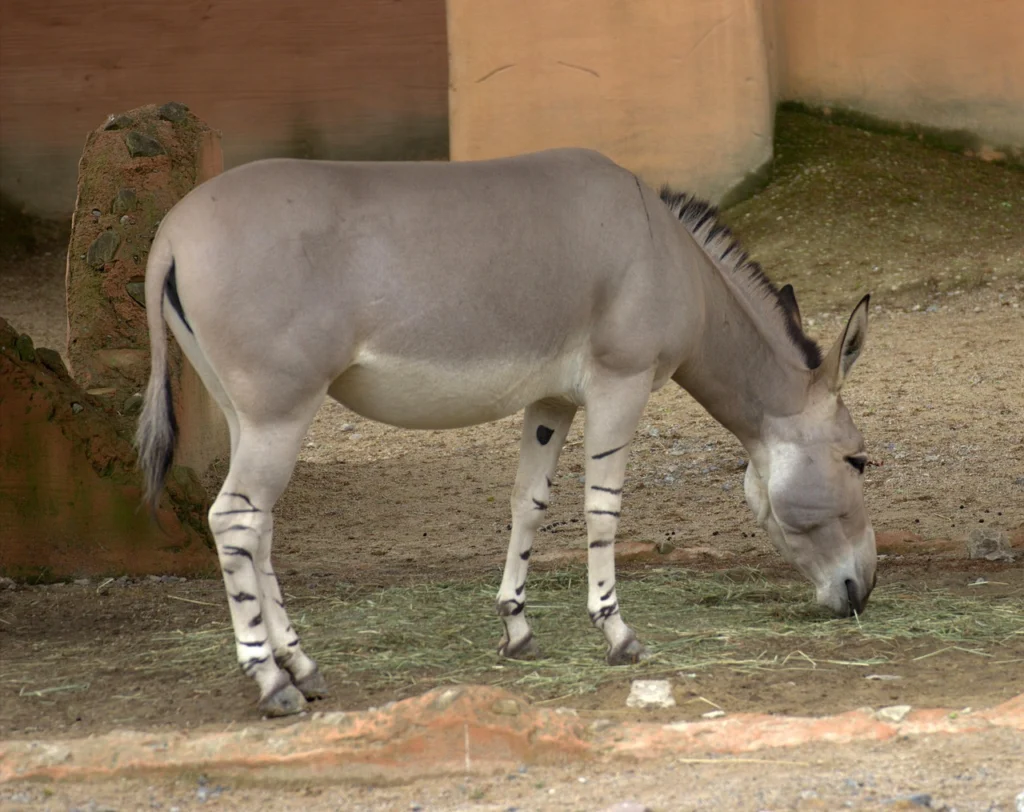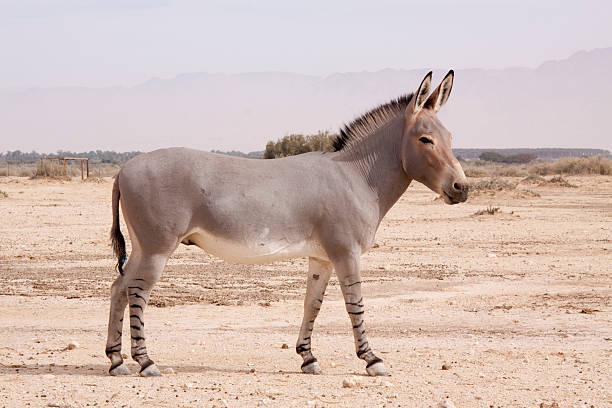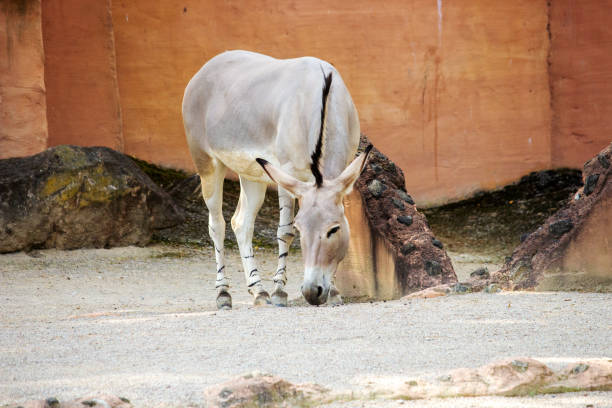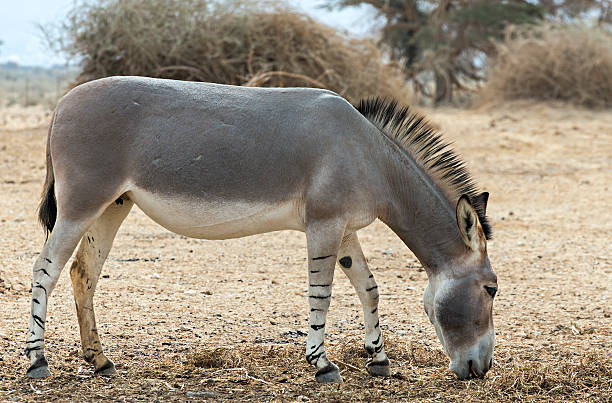Table of Contents
Scientific Classification
| Kingdom | Animalia |
| Phylum | Chordata |
| Class | Mammalia |
| Order | Perissodactyla |
| Family | Equidae |
| Genus | Equus |
| Species | Equus africanus |
| Scientific Name | Equus africanus |
Description
The African Wild Ass (Equus africanus) is a resilient and well-adapted species of horse. It inhabits the arid and semi-arid regions of northeastern Africa. This species features a slender, robust body and distinctive zebra-like stripes on its legs. It is considered the ancestor of the modern domestic donkey.
Standing at a height of 1.25 to 1.45 meters (4 to 4.7 feet) at the shoulder, the African Wild Ass weighs between 230 and 275 kg (500 to 600 lbs). Its short, smooth coat comes in shades of grayish-tan, allowing it to blend seamlessly into its desert environment. The species possesses large ears that enhance its hearing and help regulate body temperature. It is well-equipped to endure harsh conditions while conserving water.

Distribution
The African Wild Ass was once widespread in North Africa, but its population has drastically decreased. Today, wild groups primarily inhabit Eritrea, Ethiopia, and Somalia, with occasional sightings reported in Sudan and Djibouti. This species is very nomadic, traveling across different areas in search of food and water. Due to its fragmented population and declining numbers, conservation efforts are essential for its survival.
Habitat
African Wild Asses live in tough, dry habitats, such as:
Rocky deserts – Their sturdy hooves allow them to navigate rough landscapes.
Dry savannas – These areas have limited vegetation and sporadic water sources.
Scrublands – These regions provide little shade and food.
These animals are capable of enduring extreme temperatures and can go for long stretches without water. As a result, they have evolved to thrive in some of the most challenging environments on the planet.
Diet
Being herbivores, African Wild Asses primarily consume:
Grasses – Their main food source.
Shrubs and leaves – Supplementary nutrition when grass is scarce.
Bark and desert plants – In extreme conditions where greenery is limited.
They can survive without water for several days but will drink whenever available. Their strong kidneys save water, which makes them great for living in dry areas.
Behavior
African Wild Asses are known for their cautious yet highly social nature. Their behavior includes:
Solitary and small groups – Typically found alone or in small family groups.
Territorial males – Stallions establish and defend territories near water sources.
Communication – Using brays, snorts, and body language to interact.
Alertness – Always vigilant for potential predators.
They are fast runners, capable of reaching speeds of 50 km/h (30 mph) to evade threats.
Lifespan
In the wild, African Wild Asses typically have a lifespan of around 15 to 20 years. In captivity, with proper care, they can live as long as 30 years. Their lifespan can be influenced by various factors, including their environment, threats from predators, and human activities.

Reproduction and Lifecycle
Mating System – Typically polygynous, where dominant males mate with several females.
Gestation Period – Lasts about 12 months.
Birth – A single foal is born, weighing roughly 20 to 30 kg (45 to 65 lbs).
Weaning – Calves nurse for a period of 6 to 8 months.
Maturity – Females reach sexual maturity at 2 to 3 years, while males mature later, around 4 to 5 years.
Newborns are able to stand and move within an hour after birth, which is crucial for escaping predators.
Predators
Although African Wild Asses are large and swift, they face predation from:
Lions – The primary natural predators.
Hyenas – Opportunistic hunters, especially targeting foals.
Leopards – Occasionally prey on young or weak individuals.
Humans – The biggest threat due to hunting and habitat encroachment.

Adaptations
African Wild Asses possess crucial adaptations that enable them to thrive in the challenging desert environment:
Efficient Water Use – Their kidneys are designed to reduce water loss.
Strong Hooves – These help them navigate rough, rocky landscapes effortlessly.
Keen Senses – They have sharp hearing and vision to spot predators.
Social Bonds – Mothers and their foals form strong connections, which are vital for the survival of the young.
Conservation Status
The African Wild Ass is classified as Critically Endangered by the IUCN due to:
- Poaching – Hunted for food, medicine, and domestication.
- Habitat Loss – Agricultural expansion and competition with livestock.
- Human-Wildlife Conflict – Overlapping resource use leads to displacement.
- Small Population Size – Fragmented groups make reproduction difficult.
Conservation Efforts:
- Protected Areas – Establishing reserves in Eritrea and Ethiopia.
- Breeding Programs – Encouraging captive breeding for future reintroduction.
- Community Awareness – Educating local communities on conservation.
- Anti-Poaching Measures – Enforcing stricter laws against hunting.
More action is needed to help this remarkable species survive, despite conservation efforts.
Conclusion
The African Wild Ass shows nature’s strength. It survives in some of the toughest places on Earth. As the ancestor of the domestic donkey, its historical significance is undeniable. We are seeing numbers decline due to human actions and environmental problems. So, we need urgent conservation efforts to prevent extinction. Protecting this species goes beyond saving a wild animal. It’s also about keeping biodiversity and respecting nature’s delicate balance.



